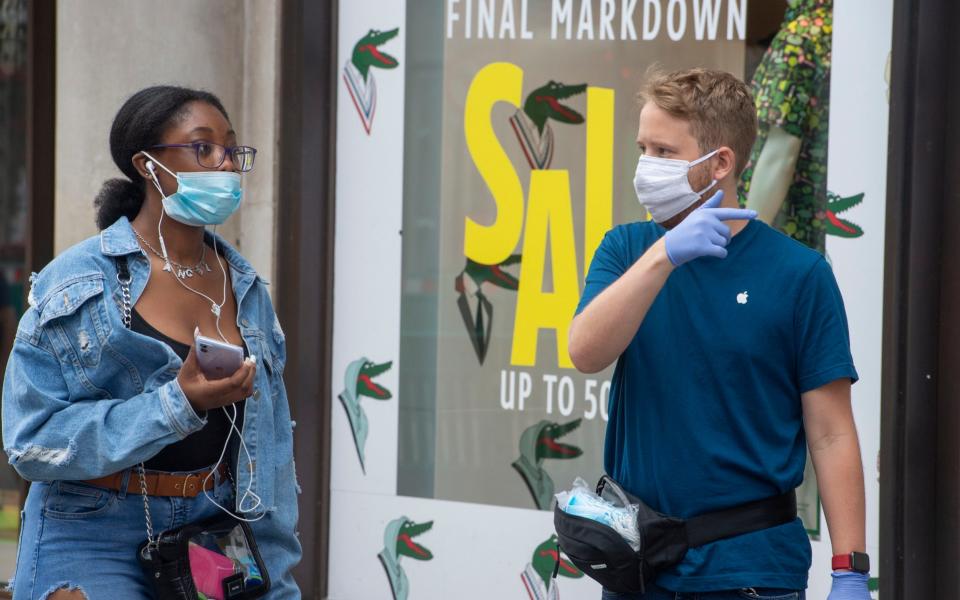The charts that show how we are shopping now

It is shopping, but not as we know it. The British consumer has got back to work, shopping enthusiastically last month to return retail sales back to their pre-coronavirus levels.
This is a great relief to retailers and the wider economy because the UK's financial wellbeing depends very heavily on consumption.
But even though overall retail spending has recovered, that does not mean the nation is restored precisely to the state it was in before the pandemic struck.
First of all, the way we shop is now radically different.
Online shopping has long been seizing ground from the high street. Back in 2017, £1 in every £6 went online. By the end of 2019 it was up to £1 in every £5.
But this slow climb has been supercharged by the pandemic, with shops closed and customers reluctant to get close to other humans, or to join sanitised queues. Now £1 in every £3 is spent online, the Office for National Statistics said on Friday.
Some of this might fall away when customers are comfortable going back to the old retail therapy, enjoying the experience of shopping, trying on clothes, seeing the goods and interacting with other people and places.
But by reinforcing an existing trend, the virus has probably advanced the shift to the internet, rather than promoting a merely temporary phenomenon.
Given this sustained caution by customers, could compulsory masks be the answer? By showing everyone is taking steps to cut transmission, the Government hopes the measure will encourage more of us to get out and about.
Unfortunately, a survey from Retail Economics suggests it could make matters worse.
Just over half of us say masks will make no difference to their habits, but 3 in 10 warn it will put them off the shops, while more than three quarters say they will not shop at all.
Just 7.6pc said masks will encourage them to shop more, while almost one-in-20 refuse point blank to cover their faces.
When it comes to getting out and about, drivers are becoming more confident. Commuting levels are down and pubs, restaurants and hotels only opened in July, so June’s fuel sales were still down by almost a third compared with the same month of 2019.
As a silver lining, that means big savings on the nation’s petrol bill.
The type of goods we bought last month were also different to the old days.
Food sales are up. Pharmacies’ trading has almost doubled, accelerating rather than slowing from the peak days of infections.
Britons also have a renewed appreciation of their gardens, having spent rather more time at home than in past springs. Now the shops are open again, sales are up almost one-fifth on last June’s level.
In contrast, sports and toys are out with sales down by a sixth. Clothes are struggling the most with the fun of a day out now gone, and the challenges of trying on clothes then quarantining them also getting in the way.
On the plus side, more shops are opening so customers will at least have some choice about which outlets to visit.
In the final weeks of June 1 in 10 shops remained closed, but half of those were planning to open in early July.
Even among clothing shops, which were slower to reopen in part because of their "non-essential" status, fewer than one in 25 expected to remain closed well into July.
Every petrol station had been open for at least a fortnight by late June.
Department stores and household goods specialists are the least likely to be open.
They might be encouraged by the surge in sales of those products. If that is maintained, there seems little reason to keep their doors closed.

 Yahoo News
Yahoo News 